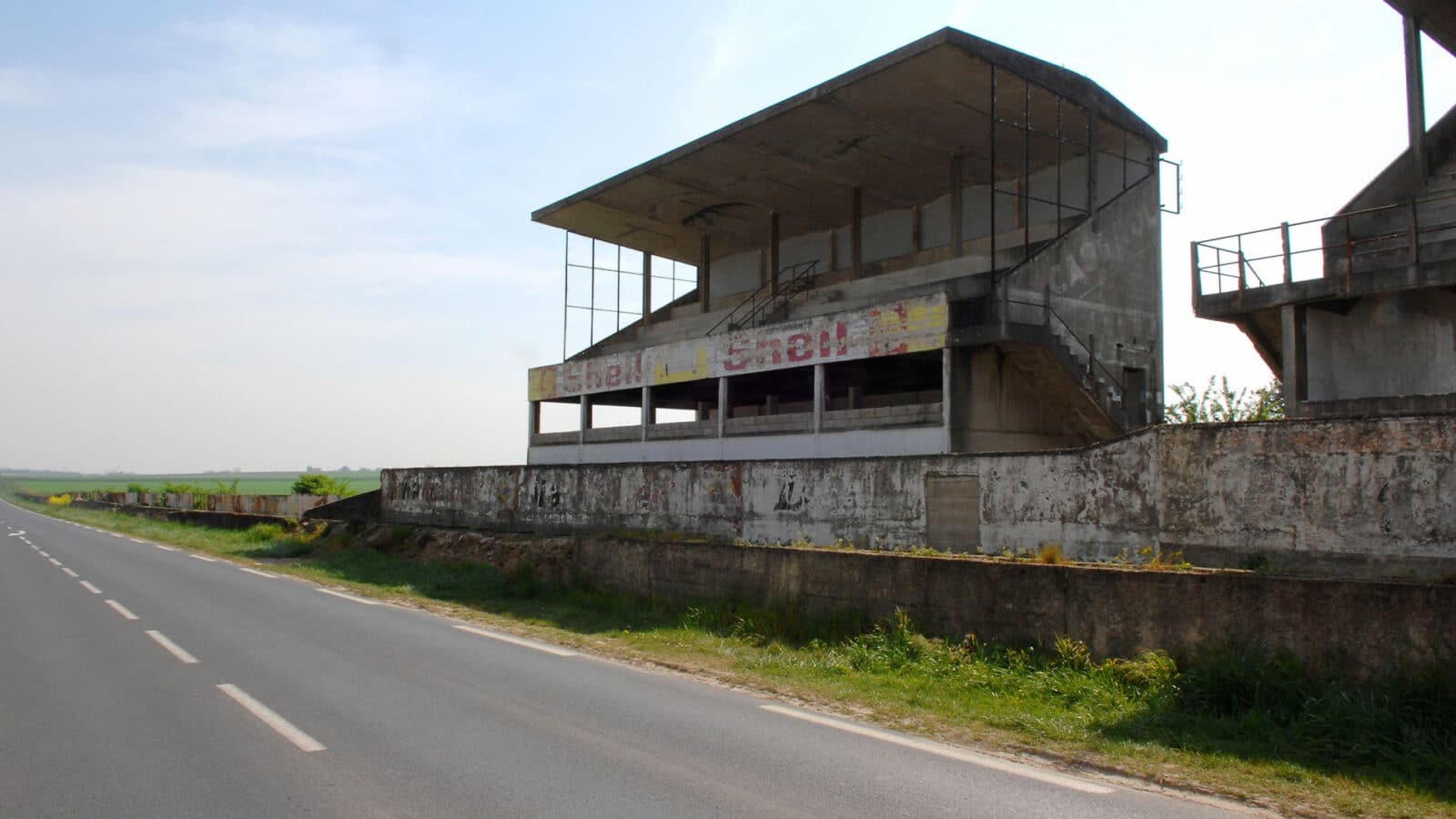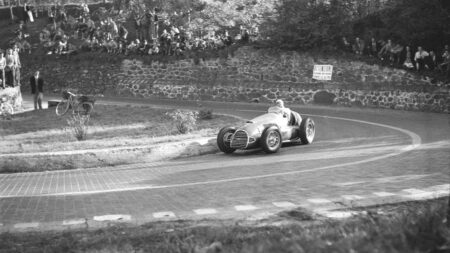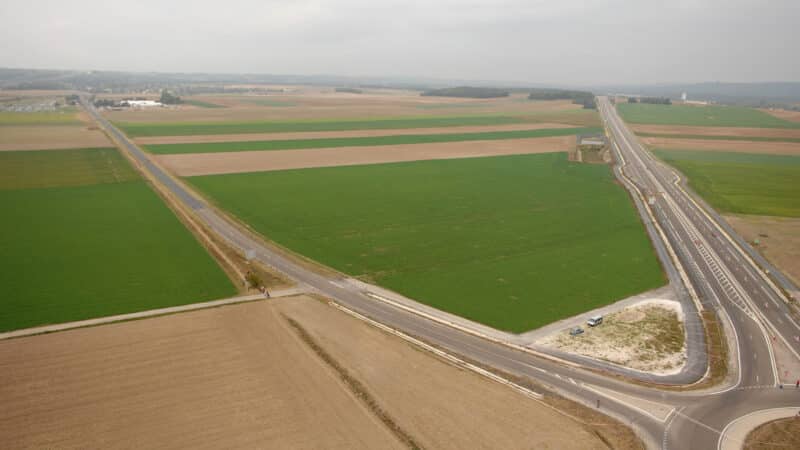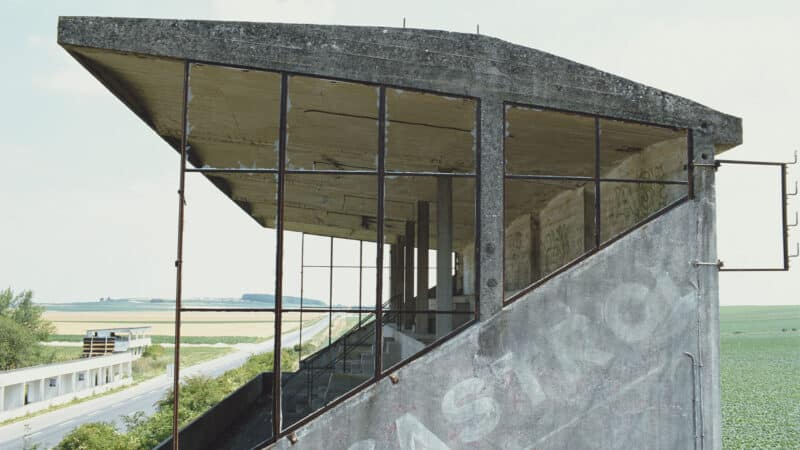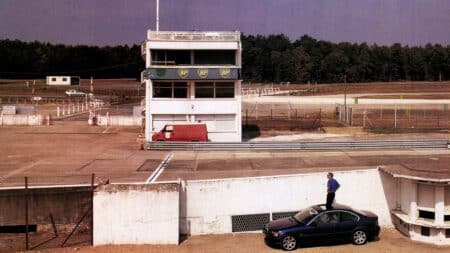Happily, Monsieur Michelin’s map told a different story. Leaving the City on the N31 towards Soissons, we drove out of Reims and directly onto the road that, at the village of Thillois, turned into the main straight of this truly awesome circuit. In fact you turn left in Thillois, opposite the famous La Garenne restaurant and head, instead, up the pit straight, through the arcing right hand sweeper at its conclusion, across a cross-roads and through a couple of delightful curves before reaching the hairpin at Muizon which leads you back onto the N31, two miles upstream of Thillois. Two miles of straight, two miles flat out waiting for something to break before turning once more onto the pit-straight.
Simply calling the 8.3-mile track ‘fast’ scarcely does justice to it. During the 1966 French Grand Prix, the last it was to hold, Lorenzo Bandini was to claim pole position for Ferrari at a speed of 145.3mph. So never run away with the idea that only Spa, Monza or Silverstone ever held a claim to being the fastest grand prix circuit of all. In its day, Reims was quicker than the lot of them. Had it survived the political and financial woes that were to bring about its demise in 1970, I guess a modern F1 driver with the commensurate ratio of balls to brains would circulate at 170mph or more.
Away from the pits, there no longer remains any sign that, for more than 40 years, the greatest drivers in the world came here to do battle. At other circuits we had been able to turn up relics from the past, but once you heave right at the end of the Thillois-Gueux straight, you’ll find nothing.
That said, given what remains of the pits themselves, this is hardly cause for sorrow. There is nowhere in the world remotely like it and nothing can prepare you for it’s moth-eaten majesty. Standing proud and alone in a frankly undistinguished slice of French countryside there is 200 yards of full grand prix infrastructure. Imagine taking the pit straight at Silverstone, complete in every detail from its track, grandstands and control towers down to its advertising hoardings, arc lights and even its podium and transporting it to the mathematical middle of nowhere. You now have some conception of the sense of surreal incongruity which hurtles down upon you in this place.
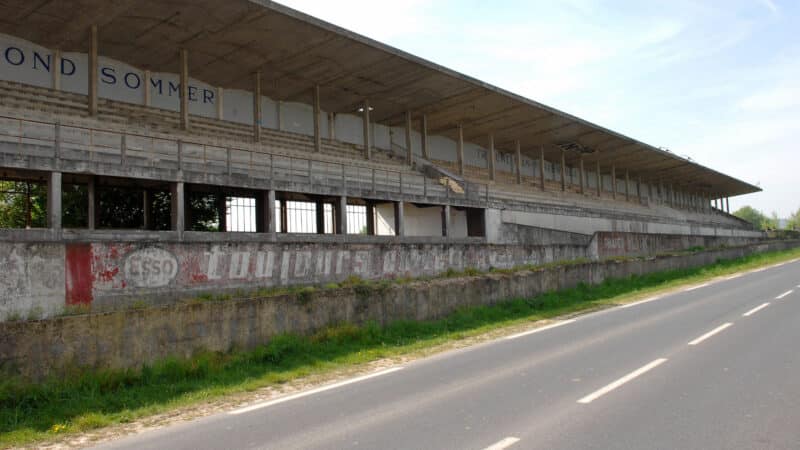
The straight down which Hawthorn, Fangio and more once slipstreamed and diced
DPPI
Except I forgot to mention the most important detail. Once you have moved your grand prix track you must leave it for a generation or more, allowing only the ravages of the seasons to erode the buildings, fade the paint and contrive such a scene of such exquisite neglect as Time alone can create. Then you’ll know what it is like to be here.
It is rather easier, however to go and see for yourself: For all its speed and latter day beauty, Reims is not remembered as a ‘Premier League Circuit’. In eyes of those who drove there, it pales slightly as a challenge compared to the likes of Spa, the Nürburgring, Rouen, Monza, Zandvoort and the Österreichring, not to mention those further afield like Suzuka and the old Kyalami. Sure it was fast, as bona fide a slip-streaming circuit as Monza, but as you drive around the circuit you’ll find no corner to match the thrill of an Eau Rouge or the Pflanzgarten.
